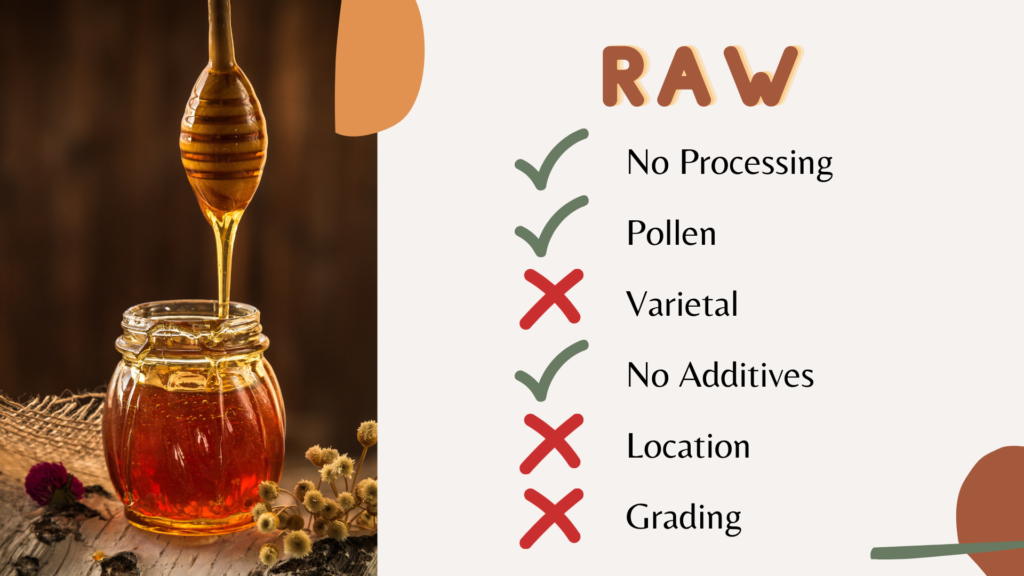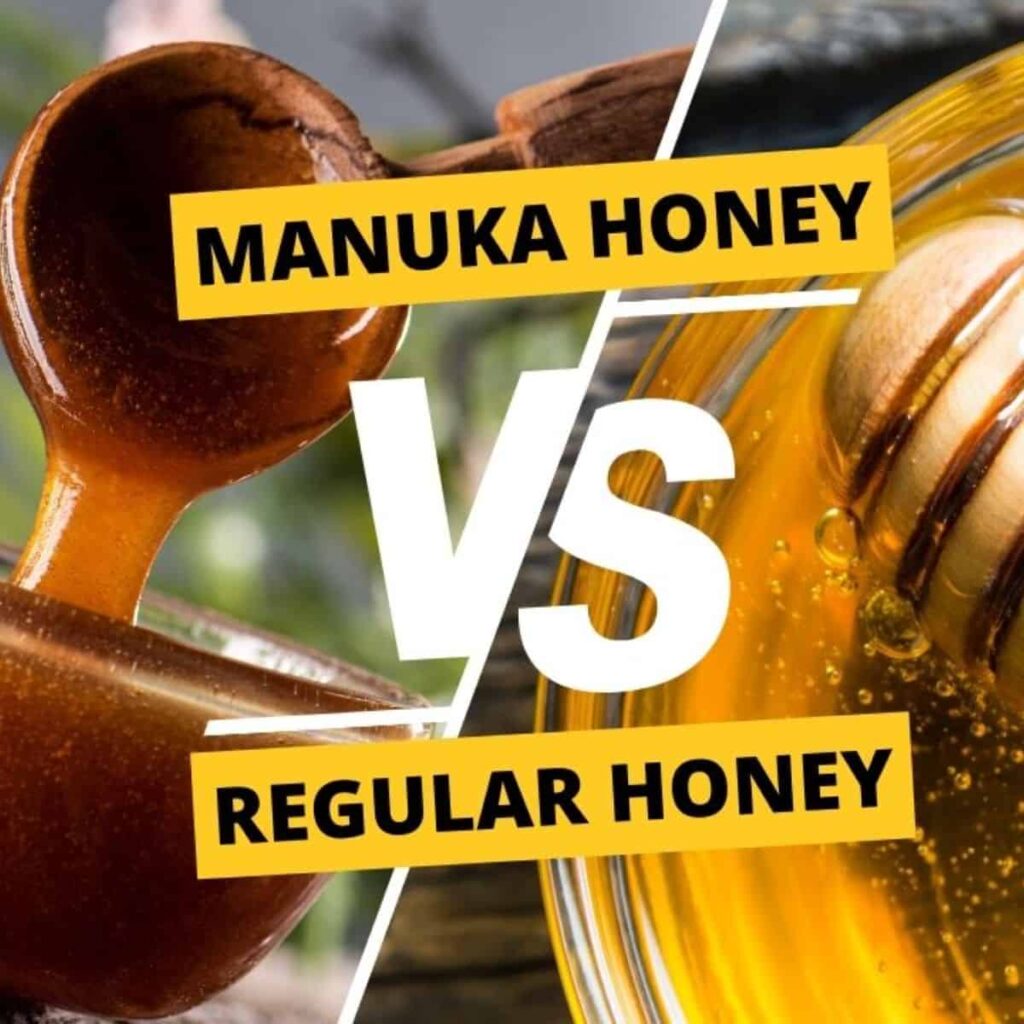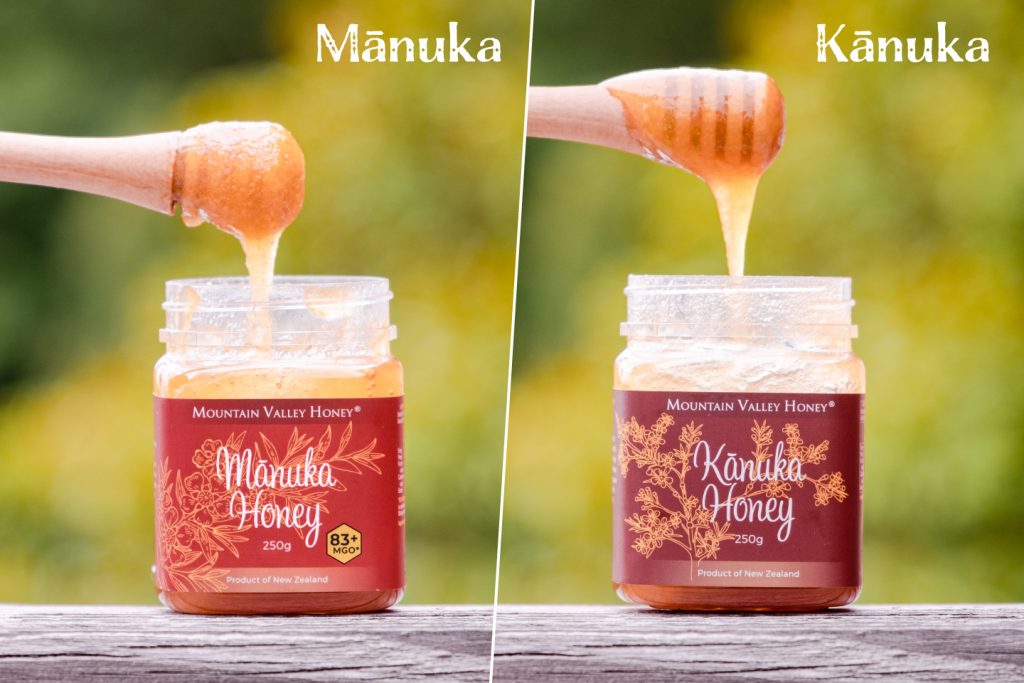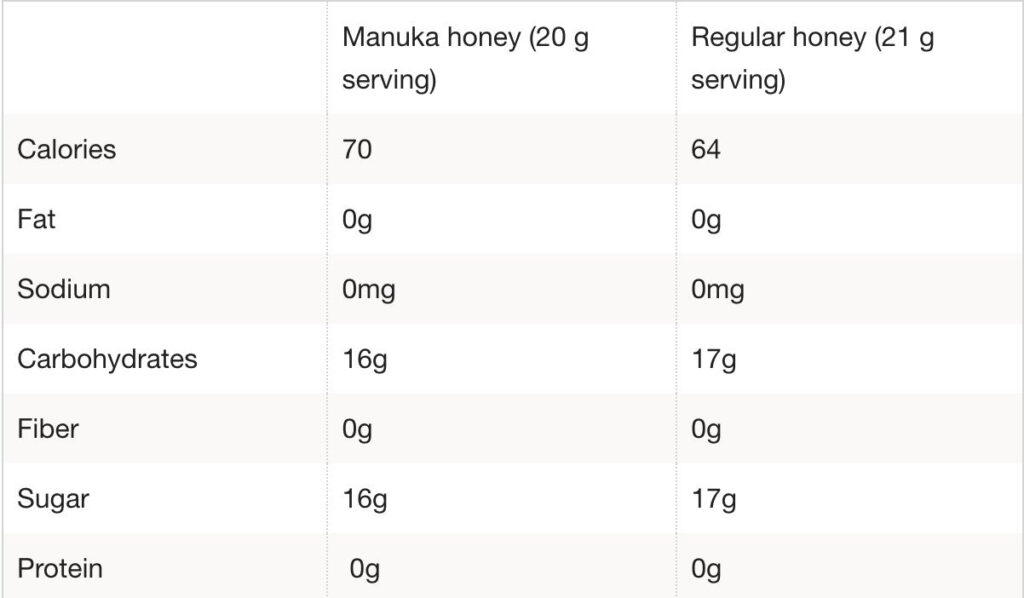
Have you ever wondered about the distinction between Manuka honey and regular honey? These two types of honey may look similar, but they differ significantly in terms of taste, texture, and health benefits. While regular honey is made from the nectar of various flowers, manuka honey is derived from the flowers of the manuka bush in New Zealand. Its unique properties make it not only exceptionally delicious but also renowned for its potential medicinal properties. So, let’s explore the differences between these two types of honey and discover what makes manuka honey so special.
Manuka Honey vs. Regular Honey
Honey is a natural sweet substance that has been enjoyed by humans for thousands of years. It is not only delicious but also possesses various health benefits. While there are many different types of honey available on the market, two popular varieties that often come up in discussions are Manuka honey and regular honey. In this article, we will explore the differences between these two types of honey and delve into their unique characteristics, processing methods, flavor profiles, grading systems, and medical and therapeutic uses.
What is Manuka Honey?
Manuka honey is a monofloral honey that comes from New Zealand, specifically from the nectar of the Manuka tree (Leptospermum scoparium). The Manuka tree is native to New Zealand and is known for its small white or pink flowers. What sets Manuka honey apart from regular honey is its distinct chemical composition, which gives it exceptional antibacterial properties and a wide range of potential health benefits.
What is Regular Honey?
On the other hand, regular honey refers to the honey that is produced from the nectar of various flowers without any specific botanical source. This means that regular honey can be derived from a wide range of flowering plants, such as clover, wildflowers, or orange blossoms. Regular honey is the most commonly found variety in the market and is widely used in cooking, baking, and as a natural sweetener.

What is Honey?
Before delving deeper into the differences between Manuka honey and regular honey, it’s important to have a basic understanding of what honey is. Honey is a natural substance produced by bees through a complex process. Bees collect nectar from flowering plants, which they then bring back to their hive. In the hive, bees regurgitate and store the nectar in honeycomb cells. Enzymes present in the bees’ saliva convert the nectar into honey, which is then sealed with beeswax. The unique composition of honey, which includes sugars, enzymes, amino acids, vitamins, and minerals, contributes to its characteristic flavor, color, and texture.
What is Unique about Manuka Honey?
What sets Manuka honey apart from regular honey is its unique chemical composition, derived from the nectar of the Manuka tree. Manuka honey contains high levels of a compound called methylglyoxal (MGO), which is known for its exceptional antimicrobial properties. MGO is formed when the enzyme dihydroxyacetone (DHA) in the Manuka tree’s nectar is converted during the honey-making process. This compound is responsible for the antibacterial and healing properties that are exclusive to Manuka honey.

Processing and Production
The process of harvesting Manuka honey differs from that of regular honey. For Manuka honey, beekeepers strategically place their hives in areas where the Manuka tree is abundant for the bees to collect the unique nectar. Once the honeycombs are filled with Manuka honey, they are carefully harvested, ensuring minimal disruption to the hive and honeycomb structure. The extraction and filtration processes for Manuka honey are similar to those used for regular honey, which involve removing beeswax and impurities. However, to preserve the unique properties of Manuka honey, minimal heat and processing steps are employed.
Flavor Profile
One of the most distinguishing characteristics of Manuka honey is its flavor profile. Manuka honey has a robust, earthy taste with subtle hints of caramel and a slightly bitter aftertaste. The flavor intensity can vary depending on the MGO content and the region where the honey is harvested. In contrast, regular honey comes in various flavors, ranging from mild and floral to rich and robust, depending on the source of the nectar. Each type of regular honey has its own unique flavor profile and can be used to enhance the taste of different dishes and beverages.

Color and Texture
When it comes to color and texture, Manuka honey stands out with its dark amber color and dense, viscous consistency. The darkness of the honey can vary depending on factors such as the region, climate, and MGO content. Regular honey, on the other hand, can come in a wide range of colors, from light golden to dark amber, depending on the type and source of the nectar. Regular honey also tends to have a more liquid and runny texture compared to the thicker consistency of Manuka honey.
Grading and Classification
The grading and classification systems for Manuka honey differ from those used for regular honey. Manuka honey is often graded based on its Unique Manuka Factor (UMF) rating, which indicates the level of MGO and other compounds responsible for its unique properties. The UMF rating ranges from 5+ to 20+ or higher, with a higher rating indicating a higher concentration of beneficial compounds. Regular honey, on the other hand, is generally classified based on its floral source and viscosity.

Antibacterial Properties
Manuka honey is renowned for its powerful antibacterial properties. The unique chemical composition of Manuka honey, particularly its high MGO content, gives it the ability to combat bacteria, fungi, and other harmful microorganisms. This makes it effective in treating wounds, burns, and infections. Regular honey also possesses some antibacterial properties, but the level of activity varies depending on the type and source of the honey.
Medical and Therapeutic Uses
Both Manuka honey and regular honey have been used for their medicinal and therapeutic benefits for centuries. Manuka honey, with its exceptional antibacterial properties, is commonly used in wound healing, as it can promote tissue regeneration and prevent infection. It is also believed to have anti-inflammatory and immune-boosting properties. Regular honey is used to soothe sore throats, alleviate coughs, and provide relief from seasonal allergies. Additionally, the vitamins and minerals present in honey contribute to its overall health benefits, such as supporting digestive health and improving overall wellness.
In conclusion, while both Manuka honey and regular honey share some similarities, such as being produced by bees and having sweet flavors, they differ greatly in terms of source, processing, flavor, color, and therapeutic properties. Manuka honey, with its exceptional antibacterial properties and unique chemical composition, is often considered the superior choice for medical and therapeutic uses. Regular honey, on the other hand, offers a wide variety of flavors and uses, making it a versatile ingredient in cooking and baking. Ultimately, the choice between Manuka honey and regular honey depends on personal preferences, intended usage, and desired health benefits.
